Outsourced Development’s Biggest Challenge (And How to Beat It)
Outsourced project scope changes don’t have to derail success—here’s how to stay in control.

When the requirements document hits your inbox with that satisfying thud of finality, you breathe a sigh of relief. The project is defined. The scope is clear. The path forward is illuminated.
And then reality strikes.
Three weeks into development, your client has a brilliant new idea. The market shifts unexpectedly. A competitor launches a similar feature. Suddenly, what seemed set in stone begins to crack and reshape before your eyes. The scope changes. The requirements evolve. The path forward becomes overgrown with new possibilities and challenges.
At 1985, our outsourced software development team has weathered countless scope storms. We've learned—sometimes painfully—that requirement modifications aren't exceptions to the rule; they are the rule itself. The question isn't whether scope will change, but how gracefully we can adapt when it inevitably does.
This isn't just about adding a few extra features or tweaking some functionality. It's about maintaining trust, preserving quality, and delivering value when the target keeps moving. It's about turning what could be a project's greatest vulnerability into its greatest strength.
Let's explore how to master this delicate dance.

The Reality of Requirement Volatility
The statistics tell a sobering story. According to the Project Management Institute, 52% of projects experience scope creep, while only 57% finish within their original budget. A McKinsey study found that large IT projects typically run 45% over budget and 7% over time while delivering 56% less value than predicted.
These aren't just numbers. They represent real projects, real teams, and real businesses struggling with the fundamental challenge of software development: requirements change, often dramatically and frequently.
At 1985, we've seen firsthand how scope changes manifest in outsourced projects. Sometimes they arrive as innocent requests: "Could we just add this small feature?" Other times, they emerge from strategic pivots: "Our market research indicates we need to completely rethink the user flow." And occasionally, they stem from technological discoveries made during development itself: "This architecture won't support the scale we need."
The traditional approach—rigidly adhering to initial requirements and treating changes as exceptions—simply doesn't work in today's fast-paced business environment. Software development isn't manufacturing; it's exploration. Each line of code opens new possibilities and reveals unforeseen challenges.
This reality is even more pronounced in outsourced relationships, where communication channels are extended across time zones, organizational boundaries, and sometimes cultural differences. When the team building the software is separate from the team envisioning it, requirement modifications become not just technical challenges but relationship tests.
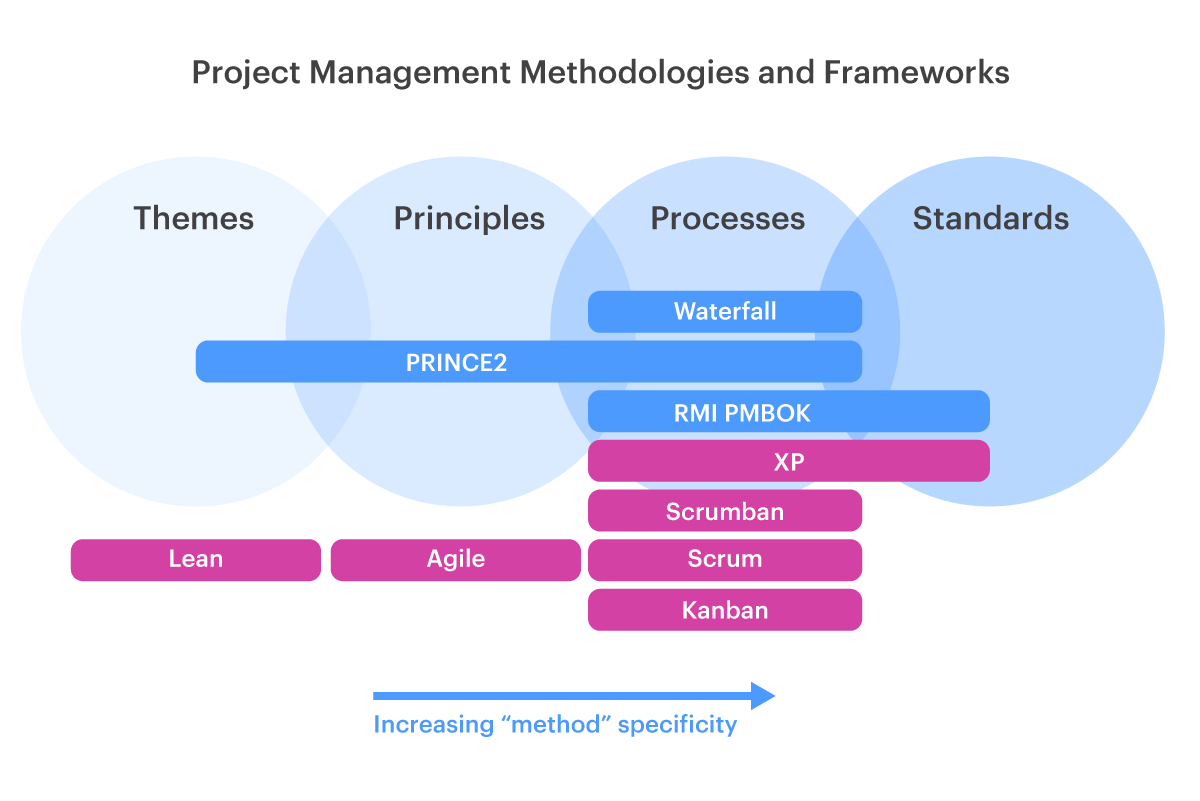
The Change Management Framework That Actually Works
After years of refining our approach at 1985, we've developed a framework for handling scope changes that preserves project health while accommodating necessary evolution. This isn't theoretical—it's battle-tested across hundreds of projects ranging from small startups to enterprise clients.

Expectation Setting from Day Zero
The most important conversation about scope changes happens before a single line of code is written. During initial client engagements, we explicitly discuss the inevitability of requirement modifications and establish a shared understanding of how they'll be handled.
This isn't about creating wiggle room for sloppy execution. It's about acknowledging reality and building a relationship that can withstand it. We make it clear that our goal isn't to rigidly execute against static requirements, but to deliver business value in a changing environment.
"We expect this project to evolve," we tell clients. "Our job isn't just to build what you specify today, but to help you navigate changes as you learn more about your users, market, and technical constraints."
This conversation sets the tone for everything that follows. It transforms scope changes from contract violations to collaborative opportunities. It establishes that we're partners in exploration, not just vendors executing orders.
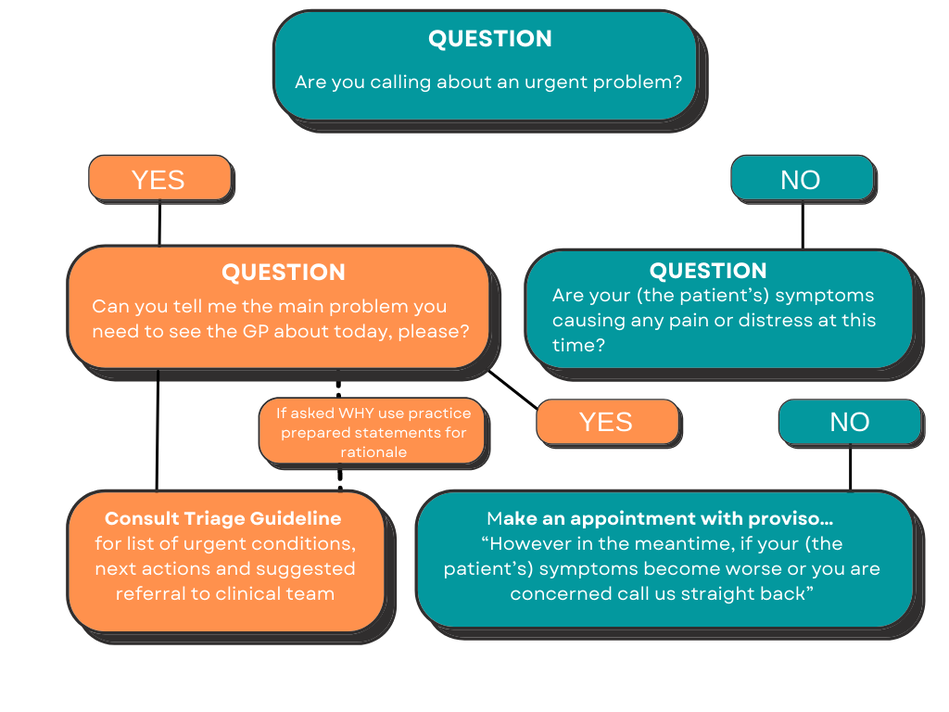
The Triage System: Not All Changes Are Created Equal
When a change request arrives, our first step is classification. We use a simple but effective triage system that helps both our team and the client understand the implications:
- Clarifications - These aren't really changes at all, but rather clarifications of existing requirements that were ambiguous or misunderstood. They typically require minimal adjustment and don't impact timeline or budget.
- Minor Modifications - Small changes that affect limited parts of the system and can be accommodated within existing sprint plans with minimal impact on timeline or budget.
- Significant Alterations - Changes that require substantial rework, affect multiple components, or necessitate new approaches. These impact timeline, budget, or both.
- Strategic Pivots - Fundamental changes to the project's direction, core functionality, or underlying assumptions. These essentially restart aspects of the project and require renegotiation of terms.
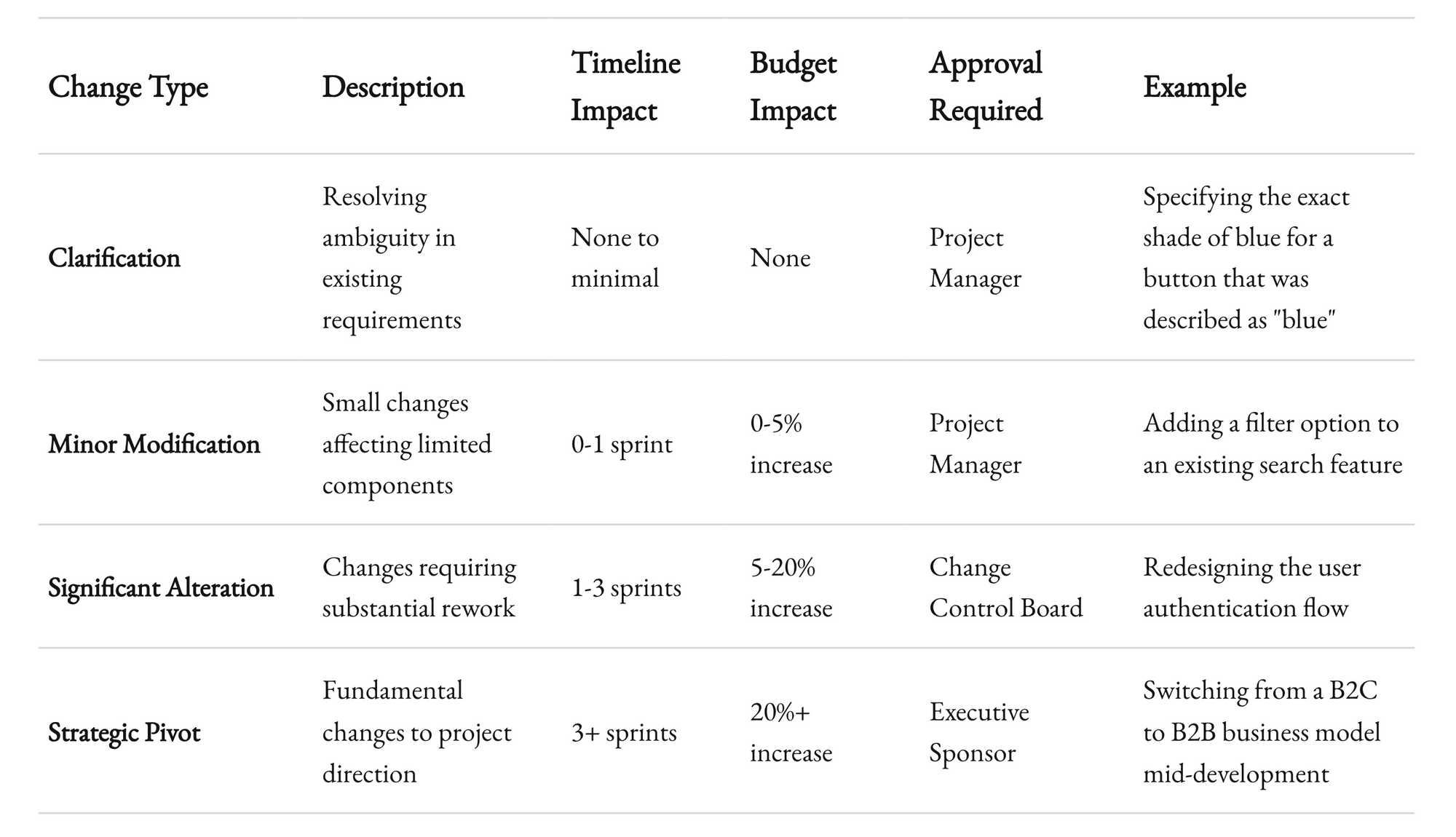
This classification isn't about saying "no" to changes—it's about creating transparency around their implications. When a client requests a change, we quickly assess which category it falls into and communicate accordingly.
"This is a significant alteration," we might say. "It will require reworking the authentication system and will add approximately two weeks to the timeline. Here are the specific impacts and options for proceeding."
This approach prevents the most common scope change problem: misaligned expectations. The client understands not just whether a change is possible, but what it will cost in terms of time, budget, and tradeoffs.
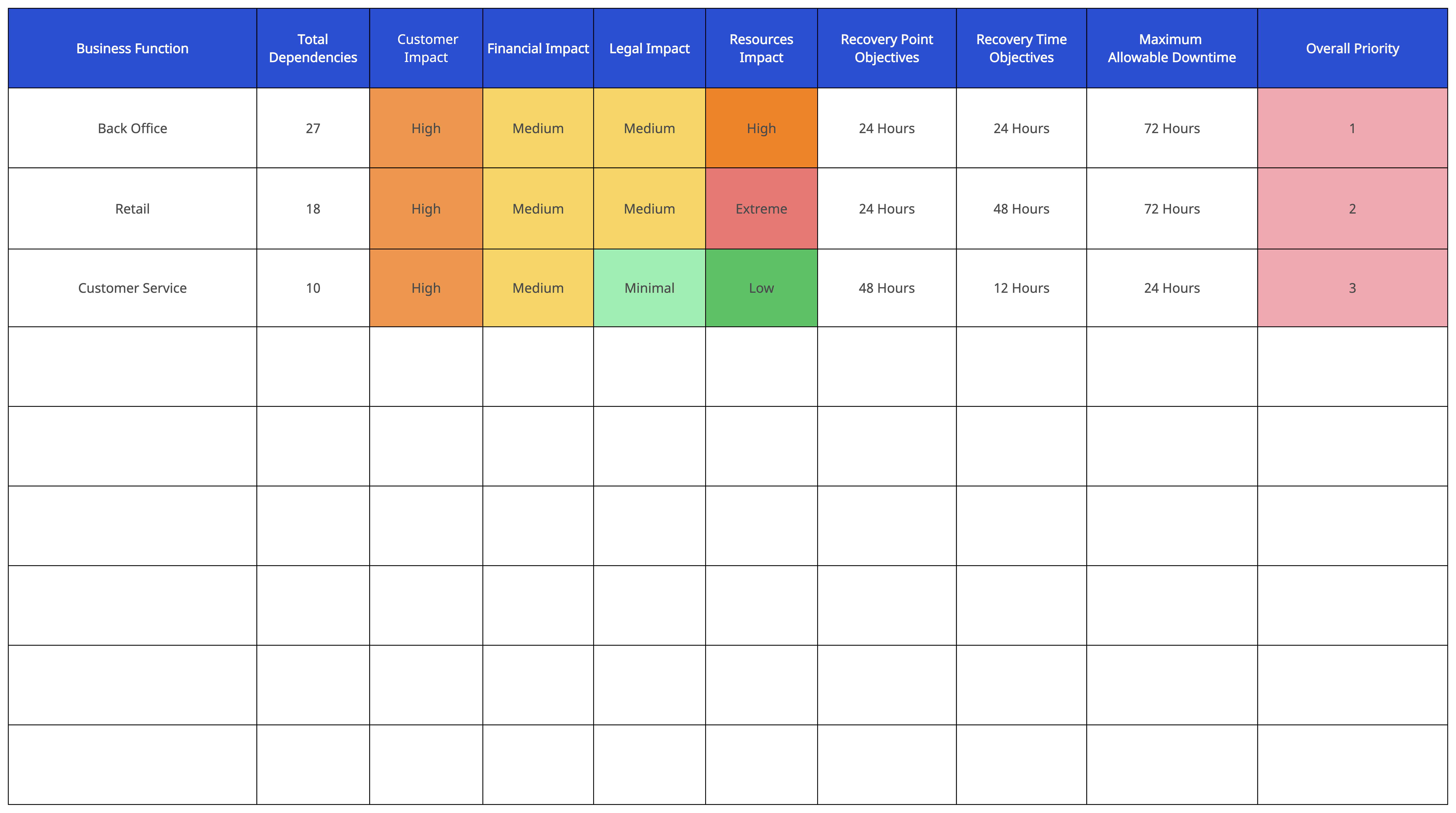
The Impact Analysis Document
For significant alterations and strategic pivots, we produce a formal Impact Analysis Document. This isn't bureaucratic paperwork—it's a crucial tool for informed decision-making. The document includes:
- Change Description - A clear, detailed explanation of the requested change
- Technical Impact - How the change affects the codebase, architecture, and existing functionality
- Timeline Impact - How the change affects the project schedule
- Budget Impact - How the change affects the project cost
- Quality Impact - How the change might affect performance, security, or other quality attributes
- Alternative Approaches - Different ways to achieve similar business outcomes with varying impacts
- Recommendation - Our professional assessment of the best path forward
This document serves multiple purposes. It ensures the client has complete information before making decisions. It creates a record of the change process for future reference. And perhaps most importantly, it transforms emotional or reactive requests into rational business decisions.
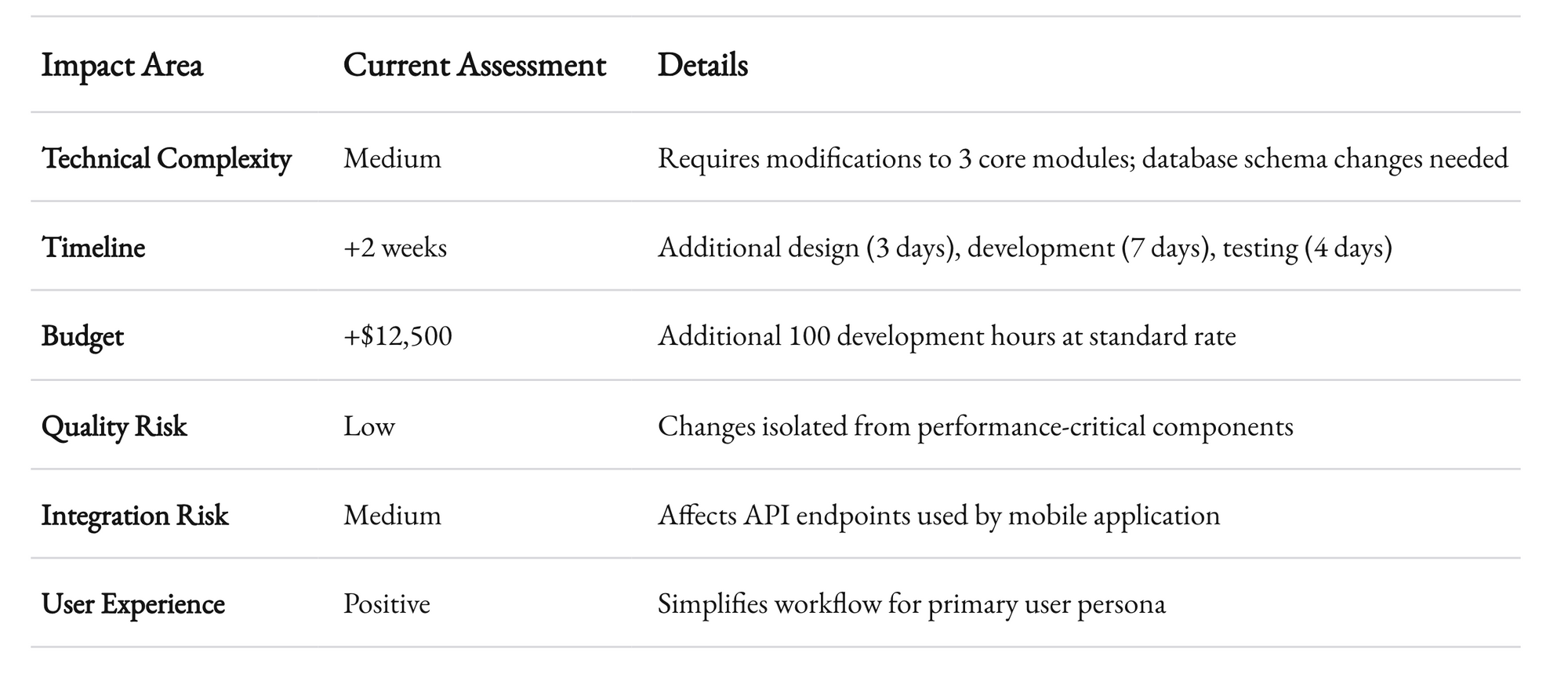
A client once requested a major feature addition midway through a project. Rather than simply saying "that will cost more" or "that will delay launch," we produced an impact analysis showing three different implementation approaches with varying levels of sophistication, cost, and timeline impact. The client chose a streamlined version that met their core needs without derailing the project timeline—a win-win outcome that wouldn't have been possible without structured analysis.

The Contract Isn't a Weapon; It's a Shield
Many outsourcing relationships turn adversarial when scope changes arise because both parties retreat to contractual language. The client points to vague requirements that could be interpreted to include the new functionality. The vendor points to specific exclusions or change management clauses.
At 1985, we've learned that contracts should protect both parties, not be wielded as weapons. Our approach to contract management around scope changes follows three principles:
Clarity Over Legalese
Our contracts explicitly acknowledge that requirements will evolve and establish clear processes for handling changes. We avoid catch-all phrases like "all reasonable modifications" or "industry-standard functionality" that create ambiguity.
Instead, we define specific change management procedures, including:
- How changes will be requested and documented
- Who has authority to approve changes on both sides
- How impact will be assessed and communicated
- How additional costs or timeline extensions will be calculated
- How disputes about change classification will be resolved
This clarity protects both parties. Clients know exactly how changes will be handled, and our team has a framework for accommodating evolution without endangering project economics.
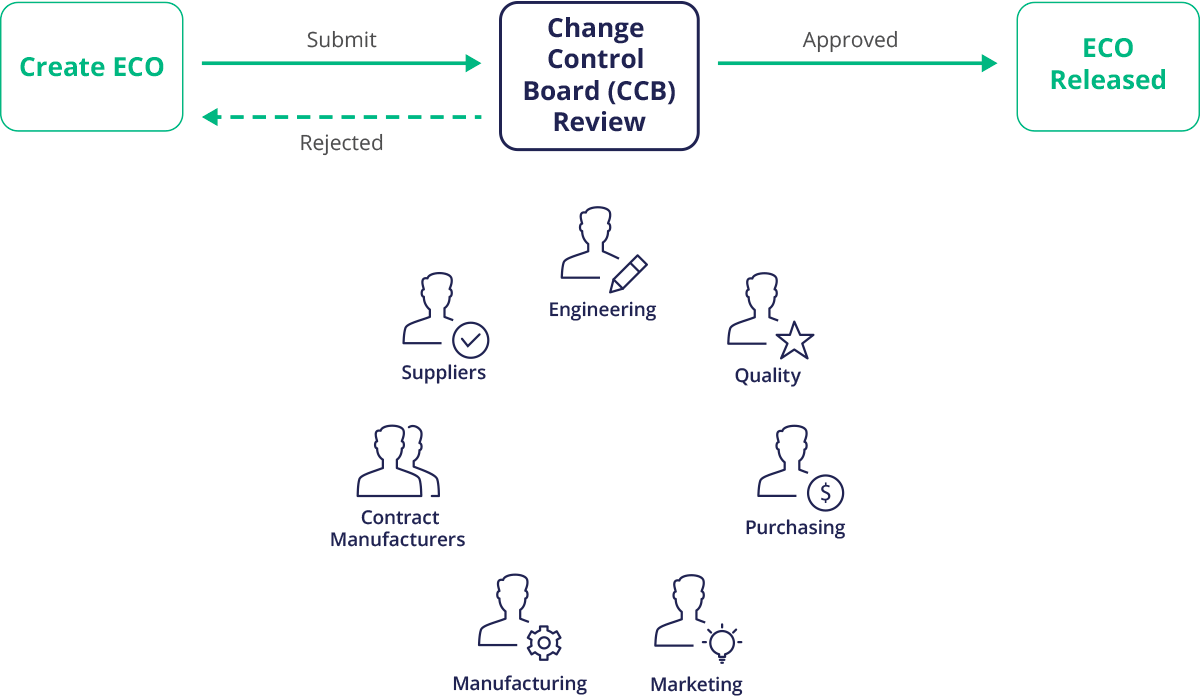
The Change Control Board
For larger projects, we establish a formal Change Control Board (CCB) with representatives from both 1985 and the client. This group meets regularly (typically bi-weekly) to review change requests, assess impact analyses, and make decisions.
The CCB isn't just a bureaucratic hurdle; it's a collaborative forum where business needs, technical realities, and project constraints are balanced. By including stakeholders from both organizations, it ensures decisions reflect both client priorities and development realities.
One client initially resisted this approach, seeing it as unnecessary overhead. Six months into the project, after the CCB had successfully navigated several major requirement shifts without derailing the timeline, the client's CTO told us: "The Change Control Board has been the difference between success and failure on this project."
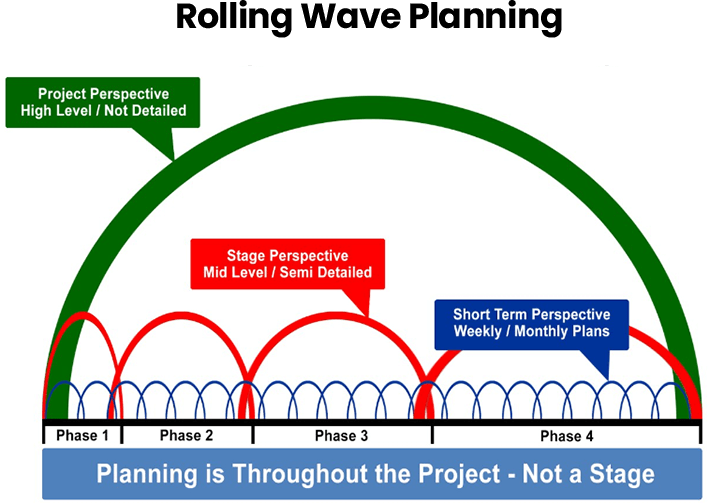
The Rolling Wave Planning Approach
Traditional project management assumes requirements can be fully defined upfront. Modern development recognizes this is rarely possible. At 1985, we use a "rolling wave" approach that accommodates this reality while maintaining project control.
We plan in detail for the immediate future (typically 2-4 weeks) while maintaining a higher-level plan for later phases. As the project progresses, we continuously refine the plan based on what we learn and how requirements evolve.
This approach allows for natural evolution without treating every change as an exception. It acknowledges that some requirements will only become clear as development progresses and users interact with early versions.
A healthcare client initially specified a patient onboarding flow based on their existing paper process. After seeing the first digital implementation, they realized a completely different approach would better serve users. Under a traditional fixed-scope model, this would have triggered a major change request. Under our rolling wave approach, we simply incorporated the new understanding into the next planning cycle, preserving both project momentum and client satisfaction.
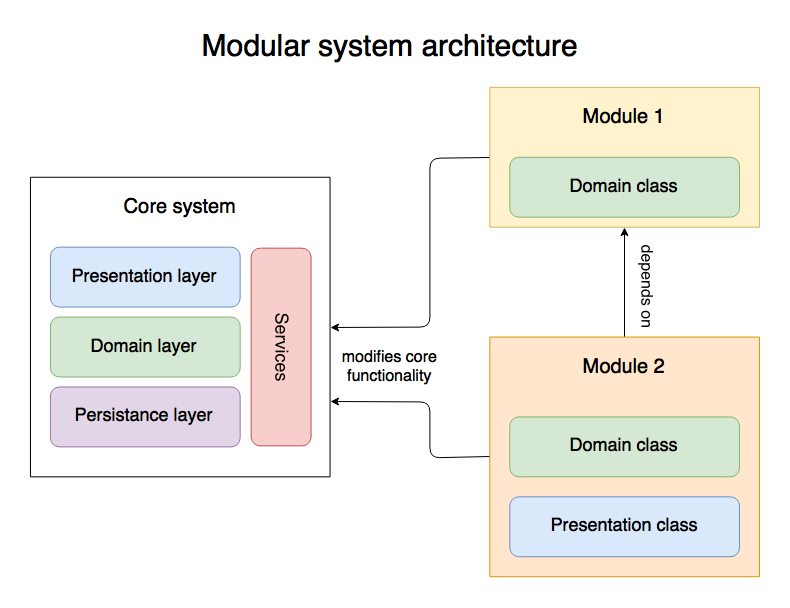
Technical Strategies for Accommodating Change
Beyond process and contractual approaches, certain technical strategies make projects more resilient to scope changes. At 1985, we've found these approaches particularly valuable:
Architecture for Evolution
We design systems with change in mind from the beginning. This means:
- Modular architecture that isolates components, allowing modifications to one area without cascading effects
- Clean interfaces between systems that can evolve independently
- API-first design that separates frontend and backend concerns
- Configuration over code wherever possible, enabling changes without development work
These architectural choices increase the initial development investment slightly but pay enormous dividends when requirements shift. A modular system might take 10% longer to build initially but can accommodate changes 50% more efficiently throughout its lifecycle.
The MVP+ Approach
Rather than building the minimum viable product (MVP) and then adding features, we build what we call the "MVP+" — the minimum viable product plus the infrastructure to support likely future changes.
This doesn't mean implementing speculative features. It means designing data models, APIs, and architecture that can accommodate the most probable evolutions without requiring fundamental rebuilds.
For example, when building an e-commerce platform, even if the initial requirements only specify simple product listings, we might design the data model to support variants, complex pricing rules, and inventory management from the beginning. This creates a foundation that can grow without requiring migration or refactoring when these features are inevitably requested.
Continuous Delivery as Change Management
Perhaps the most powerful technical strategy for handling scope changes is implementing continuous delivery practices. By maintaining a constantly deployable codebase and automated testing, we can incorporate changes more safely and with less overhead.
When changes arrive, they enter the same pipeline as planned features: they're designed, implemented, tested, and deployed using established processes. This normalizes change rather than treating it as exceptional.
One enterprise client was accustomed to quarterly releases with their previous vendor. When urgent market changes required mid-quarter feature additions, the process was painful and disruptive. After implementing continuous delivery practices with 1985, they could incorporate changes weekly with minimal friction, dramatically improving their market responsiveness.

The Human Element: Communication Strategies That Prevent Chaos
Technical and process solutions are necessary but insufficient. The human element—how changes are communicated, negotiated, and implemented—often determines whether scope changes strengthen or damage client relationships.
The No-Surprise Principle
The worst scope changes are the ones that blindside either party. At 1985, we operate on the "no-surprise principle": neither we nor our clients should ever be caught off guard by evolving requirements.
This means:
- Regular stakeholder reviews that explicitly discuss potential requirement changes
- Proactive identification of areas where requirements might evolve
- Early warning systems for changes brewing on either side
- Transparent discussion of market or business changes that might impact requirements
One client was hesitant to mention they were considering a strategic pivot, fearing it would disrupt the project. By the time they formally requested the change, they had committed internally to a direction that required substantial rework. Had they shared their thinking earlier, we could have steered development to accommodate both paths until the decision was finalized, saving weeks of work.
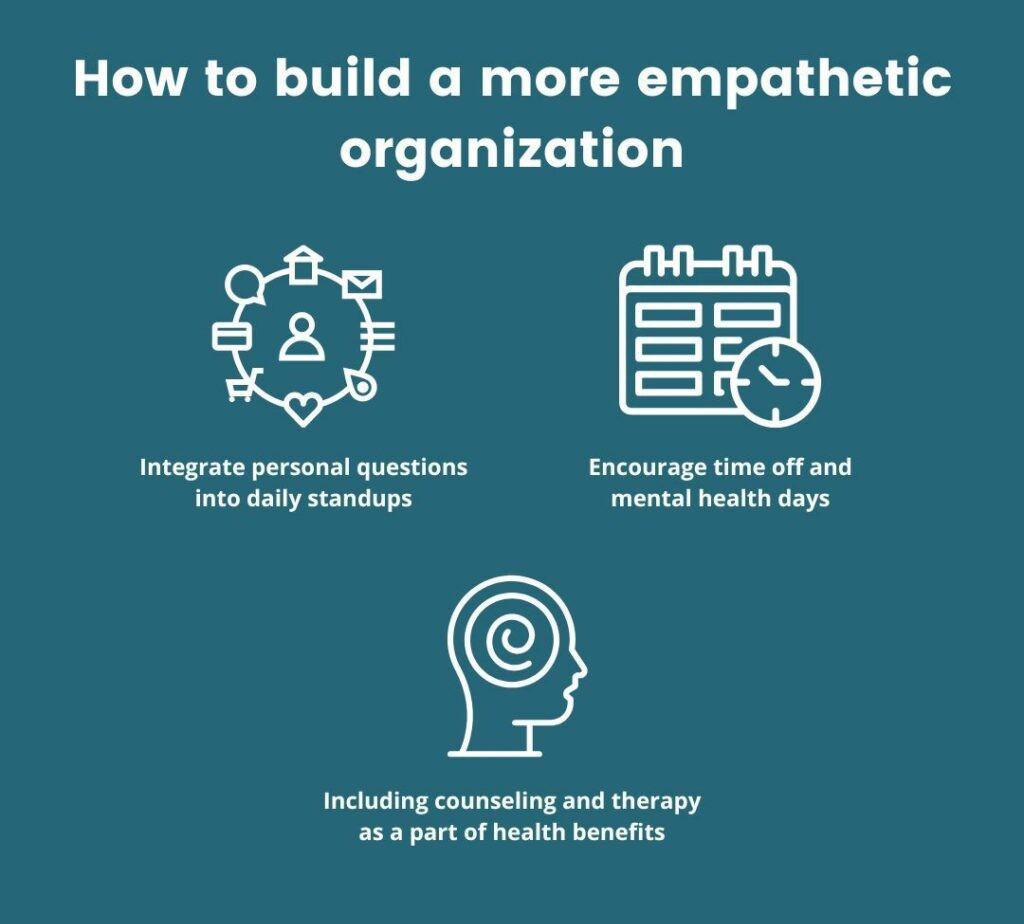
The Empathy Bridge
Scope changes often create tension because each party focuses on their own challenges. The client sees business imperatives; the development team sees technical complications. Building an "empathy bridge" between these perspectives is essential.
We train our project managers to translate between business and technical languages, helping clients understand development constraints while helping our team understand business drivers. This translation prevents the common pattern where technical teams dismiss changes as "scope creep" while business stakeholders underestimate implementation challenges.
During requirements workshops, we explicitly discuss the "why" behind features, not just the "what." This deeper understanding helps our team suggest alternatives when changes arise that might achieve the same business outcome through different technical means.
The Feedback Acceleration Loop
Traditional development creates long feedback cycles where clients only see progress at major milestones. This pattern makes scope changes particularly disruptive because they often emerge after significant work has been completed in potentially the wrong direction.
We compress these feedback cycles dramatically through:
- Weekly demos of work-in-progress
- Feature flagging that allows clients to test functionality before it's complete
- Prototype-driven development for uncertain requirements
- User testing of early versions to validate assumptions
These practices don't just improve quality; they fundamentally change how scope evolves. Instead of major redirections after months of work, we see continuous small adjustments based on rapid feedback. The project still reaches a different destination than initially planned, but it travels a smoother, more efficient path to get there.

When to Say No: Setting Healthy Boundaries
While our approach embraces change, there are situations where the healthiest response is a respectful “no” or “not now.” Identifying these situations and handling them appropriately is as important as accommodating valid changes.
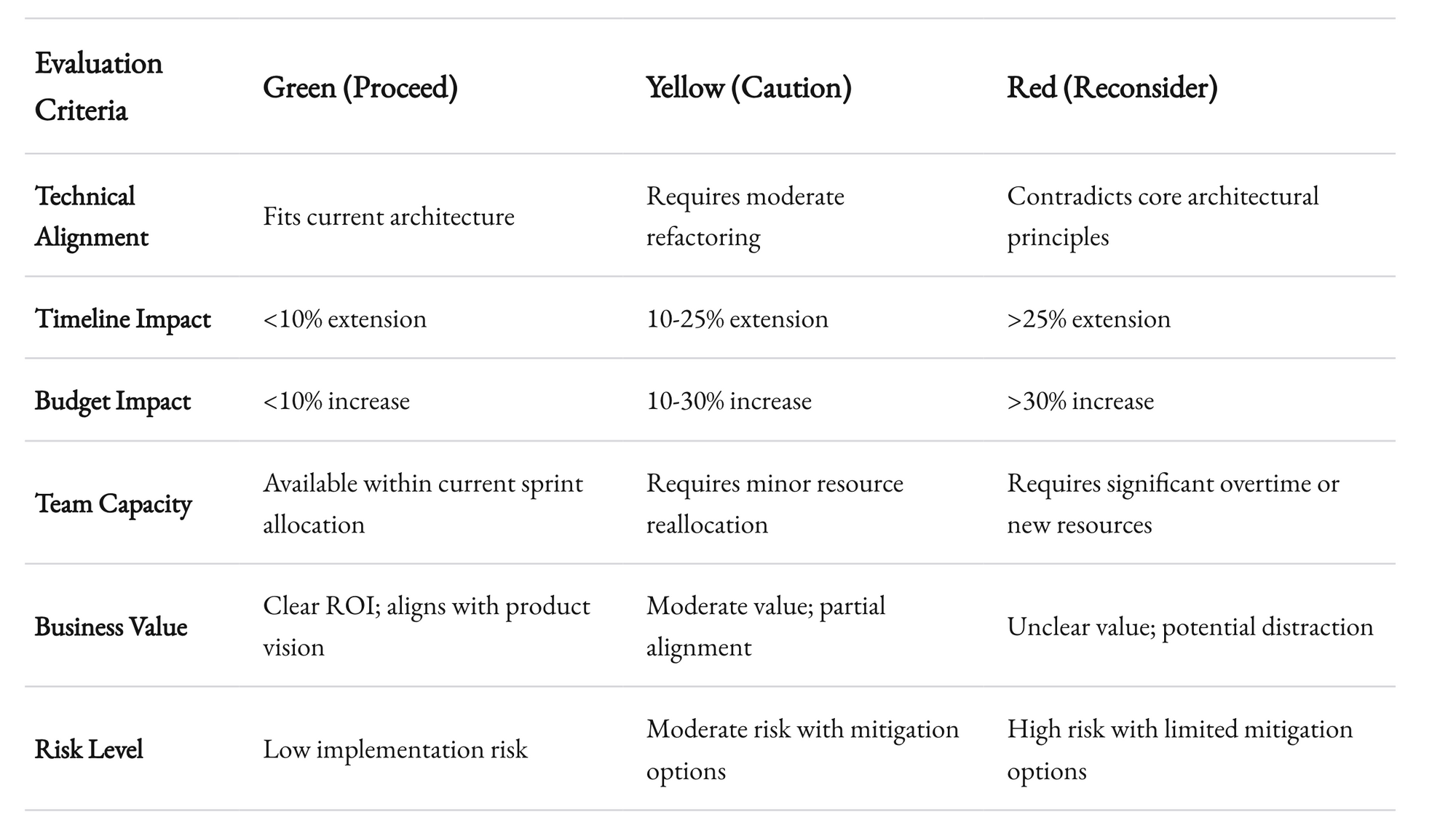
The Three Boundary Conditions
We've identified three scenarios where pushing back on scope changes is typically necessary:
- Foundation-Threatening Changes - Changes that would undermine the architectural or quality foundations of the project, creating technical debt that will harm long-term success.
- Team-Breaking Changes - Changes that would require impossible timelines, create unsustainable pressure, or violate work-life balance for the team.
- Economics-Destroying Changes - Changes that would make the project financially unviable for either party, creating a relationship that can't sustainably continue.
When these boundary conditions arise, saying “yes” isn't doing the client a favor—it's setting both parties up for failure. The art is in communicating these boundaries constructively rather than adversarially.
The Alternative-Focused Refusal
When we need to decline a change request, we never simply say “no.” Instead, we offer alternatives that respect the underlying business need while avoiding the boundary violation.
"We can't implement this specific approach within the current timeline," we might say, "but here are three alternatives that would achieve similar business outcomes while maintaining our quality standards and delivery date."
This approach transforms a potential conflict into a collaborative problem-solving exercise. It acknowledges the legitimacy of the client's goals while being honest about constraints.
The Phased Implementation Strategy
Sometimes the right answer isn't "no" but "not all at once." When clients request changes that are valid but too extensive to accommodate immediately, we propose phased implementation strategies.
"This is a valuable direction," we might say, "but implementing it all at once would delay your market entry by three months. Let's identify the highest-value 20% that we can implement now, and plan the remaining functionality for the next release cycle."
This approach allows the project to evolve without sacrificing time-to-market or quality. It transforms an all-or-nothing decision into a more nuanced conversation about priorities and tradeoffs.
Beyond On-Time and On-Budget
Traditional project management measures success by comparing final delivery to initial plans: Did we deliver what was specified, when it was promised, for the agreed cost? This approach breaks down when requirements legitimately evolve.
At 1985, we use different metrics to evaluate success in the face of changing requirements:
Business Outcome Achievement
Rather than measuring adherence to initial specifications, we track whether the delivered solution achieves the client's business outcomes—even if those outcomes evolved during development.
A project that delivers exactly what was initially specified but fails to meet the client's (evolved) business needs is not a success. Conversely, a project that diverges from initial requirements but delivers transformative business value is a triumph.
Change Responsiveness
We measure how effectively the team responds to legitimate requirement changes. Key metrics include:
- Time from change request to impact analysis
- Accuracy of impact estimates
- Client satisfaction with the change management process
- Percentage of changes accommodated without quality compromises
These metrics help us continuously improve our change management capabilities, treating adaptability as a core competency rather than an exception handling process.
Technical Adaptability
We evaluate how well our technical choices support evolution by tracking:
- Refactoring effort required to accommodate changes
- Test coverage maintenance during rapid evolution
- Technical debt accumulated during change implementation
- Architecture stability despite requirement volatility
These metrics help us refine our technical approaches to make future projects even more resilient to change.
The Competitive Advantage of Embracing Change
In today's business environment, the ability to adapt quickly to market feedback, competitive moves, and technological opportunities is often more valuable than perfect execution against static requirements.
At 1985, we've found that clients increasingly select outsourcing partners not just for cost efficiency or technical expertise, but for their ability to navigate changing requirements effectively. This capability has become a key differentiator in the outsourced development market.
The most successful digital products are rarely those that perfectly executed their initial vision. They're the ones that evolved intelligently based on market feedback, technical discoveries, and changing business priorities. Building this adaptability into the outsourcing relationship isn't just good project management—it's good business strategy.
From Change Management to Change Leadership
The traditional approach to scope changes in outsourced projects treats them as exceptions to be managed—problems to be contained. At 1985, we've learned to see them differently: as opportunities to be embraced.
When handled properly, requirement modifications don't just accommodate new ideas; they create better products. They incorporate market feedback, technical learnings, and evolving business priorities. They transform good solutions into great ones.
The key is moving from reactive change management to proactive change leadership. This means:
- Expecting and planning for evolution from day one
- Building technical foundations that support change
- Creating processes that normalize rather than penalize adaptation
- Fostering client relationships based on partnership rather than rigid contracts
- Measuring success by business outcomes rather than adherence to initial plans
This approach requires more sophistication than simply saying "yes" to every client request or rigidly enforcing initial specifications. It demands judgment, communication skills, technical excellence, and business understanding. But the results—successful products that evolve to meet real-world needs—make this investment worthwhile.
In the end, the question isn't whether your outsourced project will face scope changes. The question is whether those changes will be sources of friction and disappointment or opportunities for collaboration and improvement. At 1985, we've made our choice. We choose to lead change, not just manage it.



